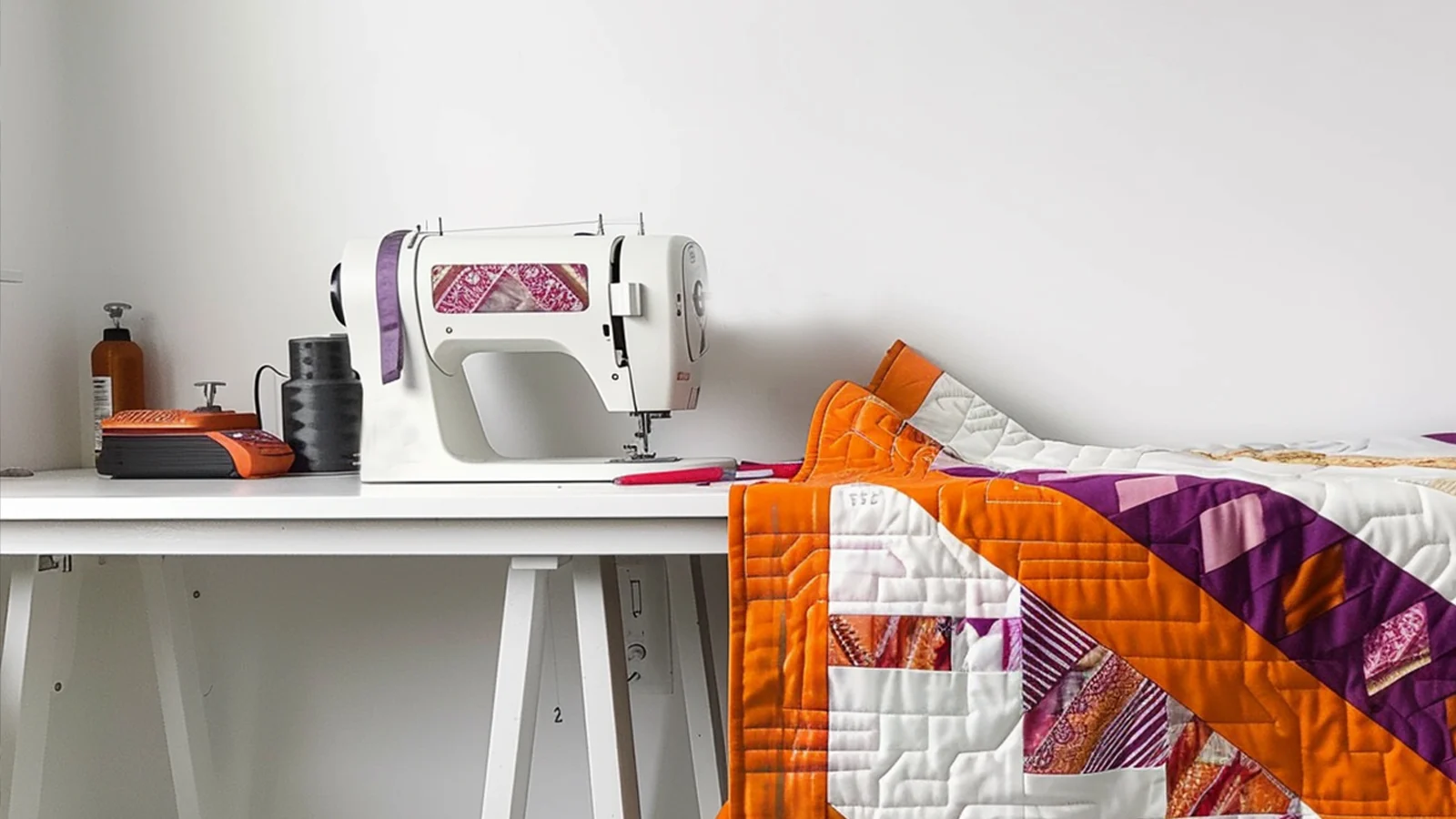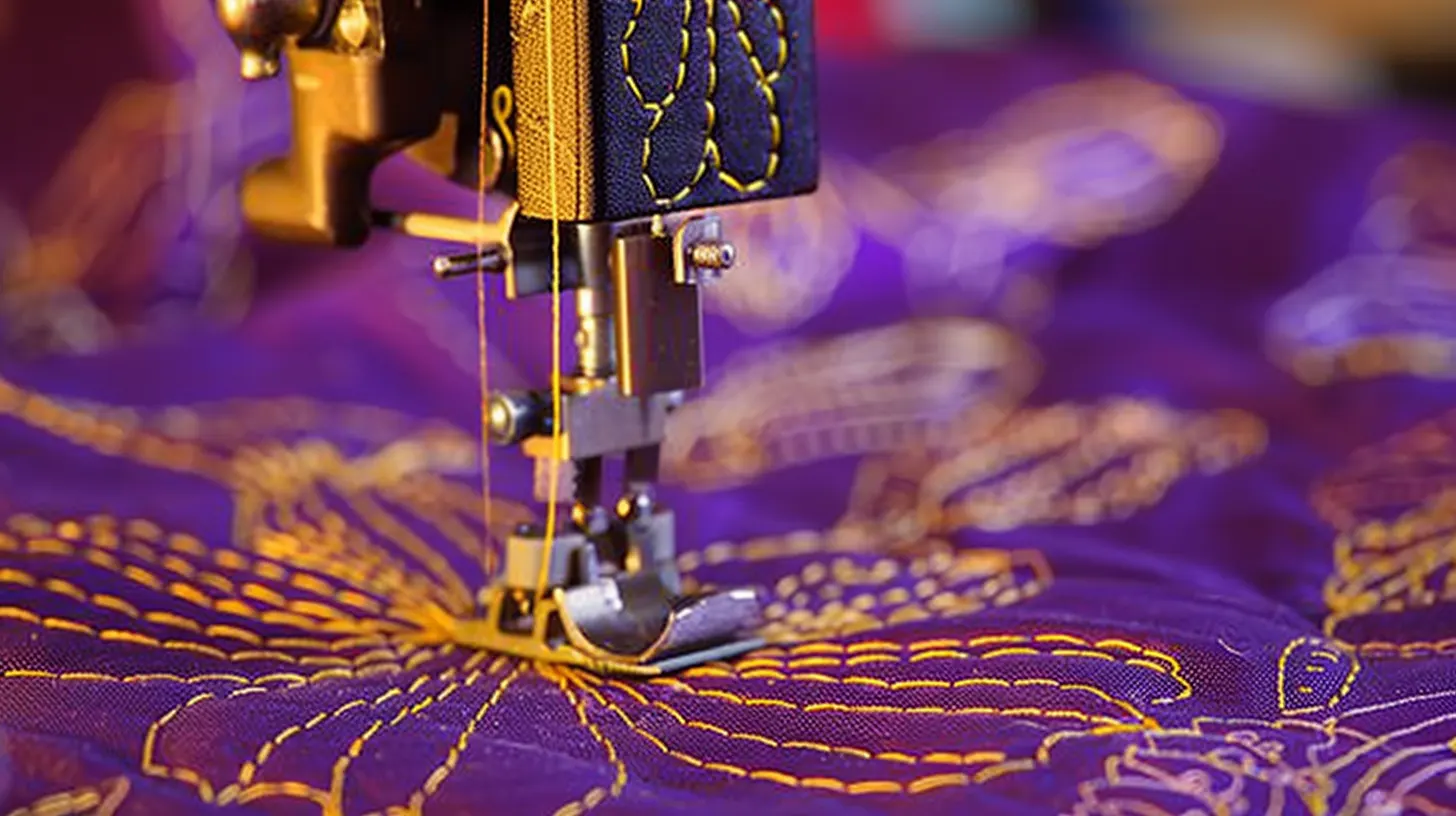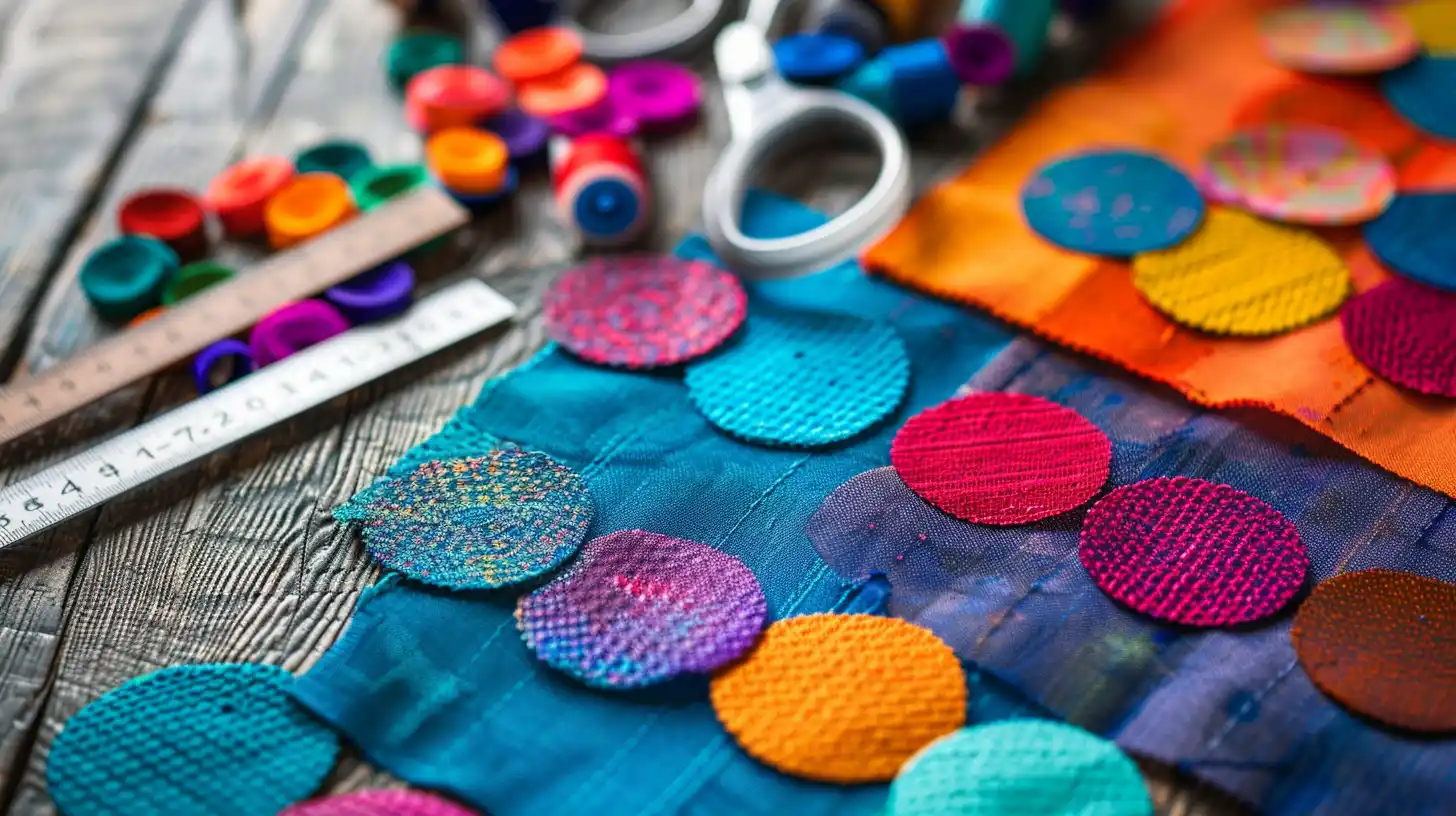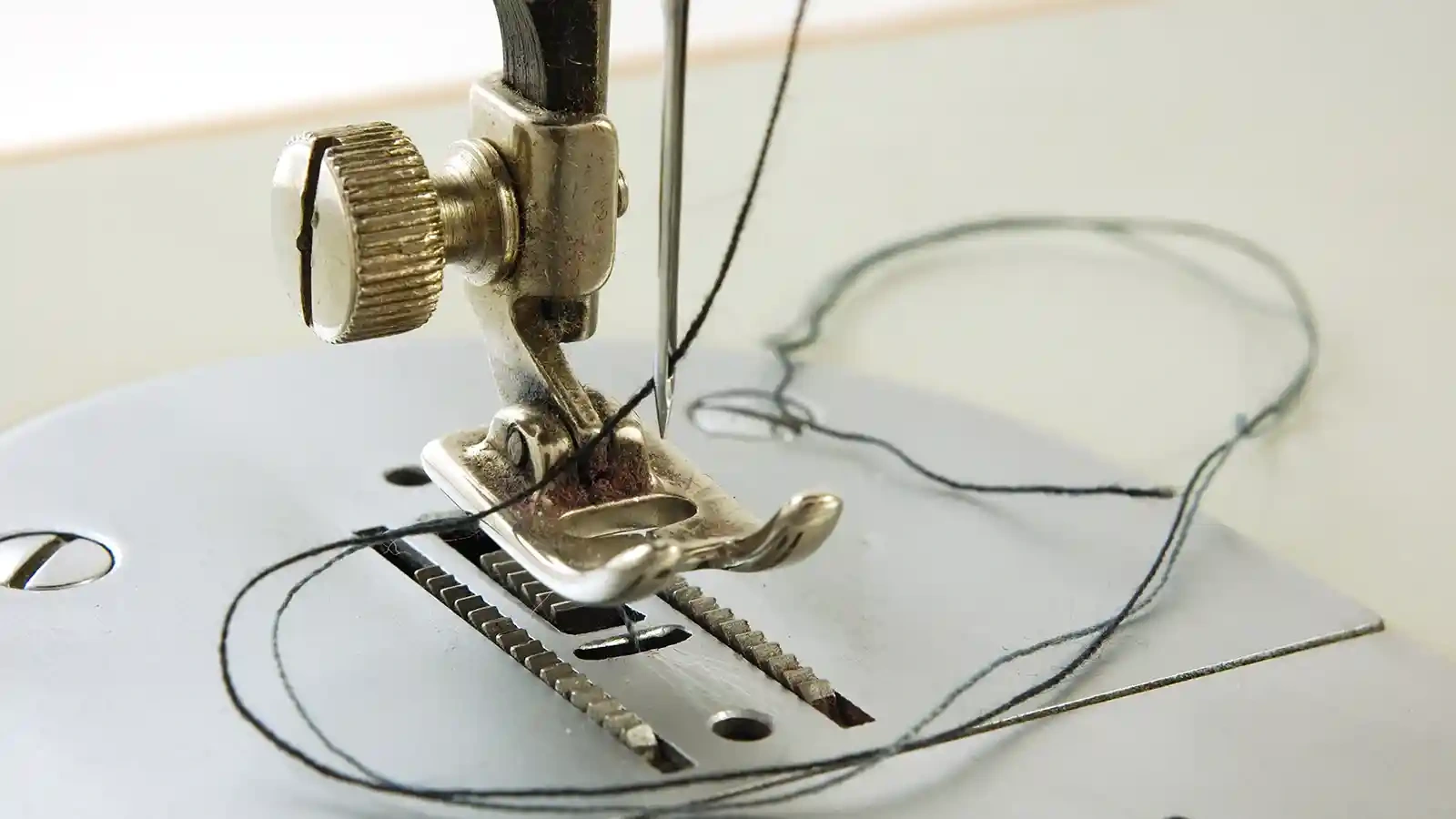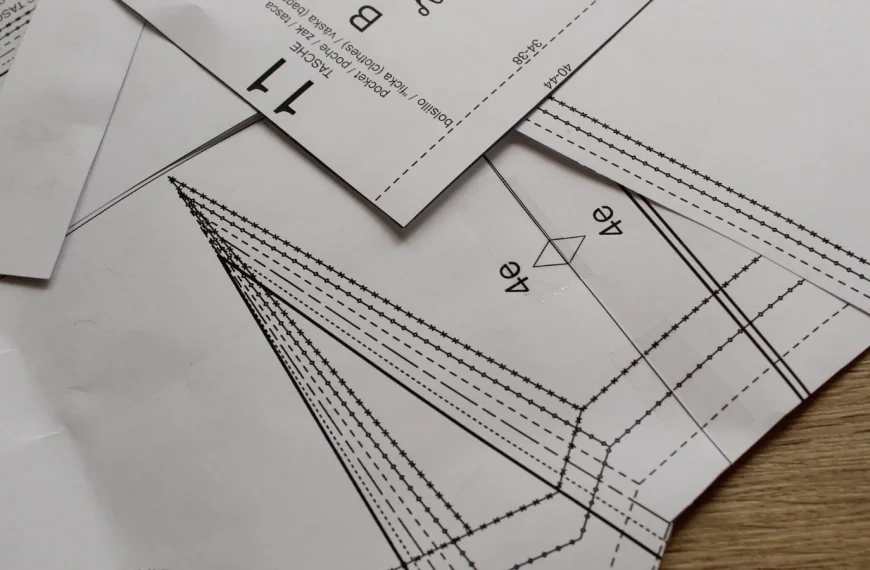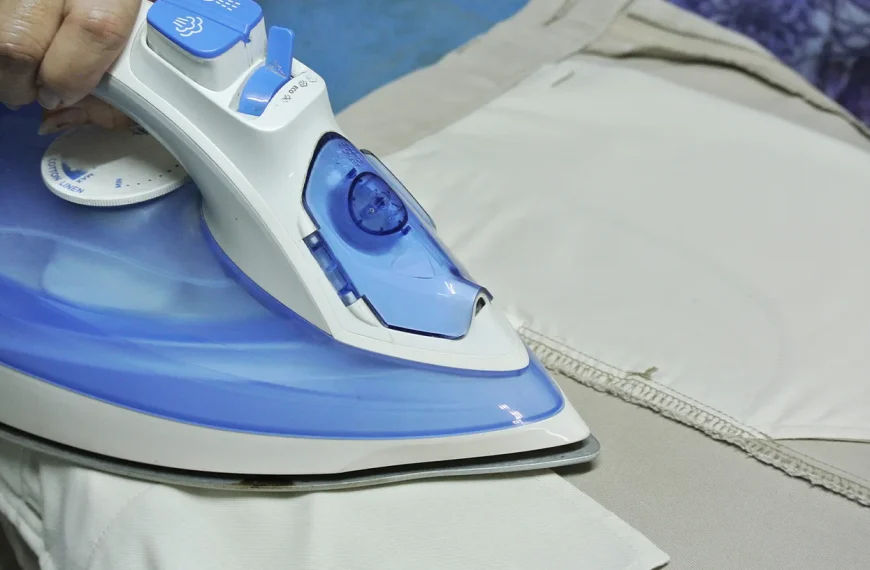When it comes to quilting, choosing the correct tension can make all the difference. The tension settings on your sewing machine can initially be a bit overwhelming. But with some practice and experimentation, you’ll soon find the perfect balance.
Whether you’re a beginner or a seasoned pro, understanding how to adjust your tension can help you achieve flawless stitches and professional-looking results. So, let’s dive in and discover the key to achieving perfect tension in your quilting projects!
Key Takeaways
- Use a medium-tension setting to quilt cotton fabrics for balanced stitches.
- Adjust the tension higher for synthetic or polyester fabrics to prevent puckering.
- Lower the tension for delicate fabrics like silk to avoid fabric damage.
- Test the tension on scrap fabric before quilting to ensure even stitches on both sides.
- Balance the top and bobbin thread tension for smooth stitching without loops or puckering.
Understanding Tension in Machine Quilting
Understanding the balance between top thread tension and bobbin thread tension is vital to achieving even stitches on both sides of your quilt.
You may need to adjust your tension settings if you notice common issues like puckering or thread breakage.
Let’s explore how balanced tension can solve these problems and elevate the quality of your quilting projects.
Top thread tension vs. bobbin thread tension
To achieve perfect quilting projects, understand the balance between top thread tension and bobbin thread tension. Your sewing machine’s dial controls the top thread tension, which influences the thread coming from the spool. Meanwhile, the bobbin case governs the bobbin thread tension, which affects the thread underneath the fabric.
Balancing the tension between them is essential for even and consistent stitches. You should adjust the tension on either or both if you notice tension issues. Adjusting the top thread tension can impact the bobbin thread tension, and vice versa.
Balanced tension for even stitches
Achieving balanced tension ensures your quilt features even stitches on both sides. Proper tension is crucial for avoiding thread breakage, puckering, and inconsistent stitch quality.
Adjust the quilting tension incrementally. Test on scrap fabric until you find the sweet spot for your project. Understanding how needle size, thread weight, and machine speed impact tension will help you master this aspect of quilting.
Common issues caused by incorrect tension settings
Incorrect tension settings can lead to a variety of quilting issues. You may face loose stitches to unwanted thread loops on your quilt’s backside. If your bobbin thread is too loose, you’ll notice bird nests or loops forming, disrupting the quilt’s aesthetic and durability.
On the other hand, thread tension that is too tight can strain your quilting stitches. This will make them appear indistinct or cause the bobbin thread to peek through the top of your quilt. Such tension problems will compromise the quilt’s appearance and structure.
Setting Tension for Quilting
Before you start your quilting project, it’s essential to test the tension on scrap fabric. This way, you can adjust the tension to ensure it’s suitable for the fabric and batting you’re using.
Fine-tuning the tension is particularly important when switching between quilting techniques, such as straight-line and free-motion quilting.
Test the tension on scrap fabric before quilting
To ensure evenly balanced stitches, test tension on scrap fabric using the same thread, needle, and foot you’ll use for your project. This step can help you determine the correct setup of your machine for quilting.
By testing tension on scrap fabric first, you can prevent potential issues that could undermine the durability and appearance of your quilt. Look for loops and zigzags in your stitching to check the tension across different movements. Precise, well-defined stitches on both sides of the fabric mean balanced tension.
Adjust the tension on the sewing machine
After the test, adjust the quilting tension to accommodate the fabric and batting layers. Start by setting the tension slightly looser than usual. This minor adjustment makes a big difference in managing the quilt sandwich effectively.
Test this initial setting on a quilt sandwich similar to your project to check for balanced stitches. If the stitch quality isn’t up to par, tweak the tension incrementally. Small changes can significantly improve the outcome.
Fine-tune tension for different quilting techniques
Using a walking foot can help when straight-line quilting, but beginning with a balanced tension is crucial.
For smooth free-motion quilting, consider slightly reducing the top tension to enable the fabric to move without puckering.
Tips for Achieving the Right Tension
It’s crucial to manage the tension for even and firm stitches.
For consistent results, use the same thread type in the top and bobbin, and check and adjust the tension as you go.
Also, keeping your sewing machine clean and well-maintained is key to optimal tension performance.
Use the same thread for consistent tension
One effective tip for achieving the correct tension is using the same thread in the top and bobbin. Selecting matching thread types makes you more likely to maintain consistent tension throughout your work. This approach ensures the thread weight and type are identical. It reduces the risk of tension issues and promotes even stitching quality.
Check and adjust tension regularly during quilting
Regularly checking and adjusting the tension during the sewing process can prevent many common issues. Doing so ensures a smoother and more beautiful finish.
If you notice loops on the back or strained stitches, it’s time for a tension adjustment. Incremental tweaks can lead to significant improvements. This ensures your stitches are consistent in quality, with smooth lines that enhance your quilt’s appearance.
Clean and maintain your sewing machine
Regularly cleaning the bobbin and its casing can prevent tension problems caused by lint buildup. It’s not just about keeping the exterior of your sewing machine looking good. You’ve got to tackle the interior as well. Lint accumulation, particularly around the bobbin area, can lead to significant tension issues.
By maintaining a clean machine and clearing out lint buildup, you can resolve many tension issues and prevent the need for unnecessary repairs. So, always keep your sewing machine in top condition for the best quilting results.
Troubleshooting Tension Problems
When you encounter loose stitches in your quilting project, it clearly shows that your tension needs adjustment.
Puckering or gathering of fabric often points to fine-tuning your tension to avoid distortion.
If you’re facing thread breakage, it’s likely due to tension issues that need immediate attention and correction.
Loose stitches: causes and solutions
If your quilt has loose stitches, it’s likely due to incorrect sewing machine tension. This problem can make your quilting projects look less professional and affect their durability.
To fix this, you’ll need to adjust the thread tension. Start by turning the tension knob on your machine slightly clockwise. This minor adjustment can significantly improve the tightness of your stitches. But, don’t overlook the bobbin tension. If the bobbin thread is too loose or not inserted correctly, you will continue to face this issue.
Puckering or gathering: adjust tension to prevent it
If you notice your fabric is puckering, it’s a sign to adjust the tension. Testing on fabric scraps before diving into your project can save you a lot of trouble. Begin with a lower setting and gradually increase the top tension until the stitches are smooth and even, with no signs of puckering.
Thread breakage: tension-related issues and fixes
Experiencing thread breakage while quilting often indicates that your machine’s tension settings aren’t quite right. It clearly indicates that your top or bobbin tension needs adjustment. To address thread breakage, begin by ensuring the balance of your tension settings.
This involves a bit of trial and error. Gradually adjust the tension, testing on scrap fabric until the thread no longer breaks. Pay close attention to both the top and bobbin tension settings. They should work in harmony to ensure smooth quilting.
Advanced Tension Adjustments for Specific Quilting Scenarios
As you venture into more complex quilting projects, you’ll encounter a variety of fabrics and thread weights. Each demands its own tension adjustments.
Quilting with different fabrics
When quilting with different fabrics, like cotton, polyester, or silk, adjust the tension to match each material’s specific needs for optimal results.
For cotton fabric, a medium-tension setting ensures secure stitches without causing the fabric to pucker.
Adjust the tension slightly higher when quilting with polyester. Doing so will avoid loose stitches and keep the fabric smooth.
With its delicate nature, silk needs a lower tension setting to prevent distortion and achieve delicate stitching.
If you’re working with heavy fabrics like denim, increase the tension to ensure the stitches penetrate well and remain durable.
When quilting with a combination of fabrics, adjust tension based on the fabric that needs the highest setting to maintain balanced, secure stitches across the quilt.
Quilting with different thread weights
When you’re quilting with thicker threads, it’s crucial to loosen the tension slightly to accommodate the increased thread weight. This ensures your stitches lay flat and look beautiful without causing puckering or thread bunching.
Opting for a larger needle size is also essential when working with heavier threads. Experimenting with small tension adjustments can help you find the perfect balance.
Quilting intricate designs
A higher thread tension might be necessary to keep stitches even when tackling dense quilting patterns.
Conversely, highly detailed quilting work often needs lower tension to prevent puckering and ensure the stitch quality is up to par.
Don’t hesitate to experiment with tension adjustments. They’re key to achieving the desired effect in your final piece.
Conclusion
In conclusion, mastering tension in quilting is crucial for creating beautiful, durable quilts. You’ll elevate your quilting game by understanding and setting the right tension and following tips to maintain it.
Don’t hesitate to troubleshoot tension problems; it’s part of the journey. And as you gain experience, you should explore advanced adjustments for specific scenarios. Remember, patience and practice are essential.
So, keep at it, and soon, you’ll be quilting with confidence, weaving together pieces that are as strong as they are stunning.
Learn more sewing tips at Longan Craft Blog! Dive into the fabric world with Longan Craft!
FAQs
What tension should I set my sewing machine to for quilting?
You should set your sewing machine’s tension to normal or slightly adjust it for quilting. This ensures even stitches and prevents problems like puckering or thread breakage, giving your quilt a professional and durable finish.
What tension should the quilting thread have?
For quilting, aim for a thread tension between 4 and 6. Adjust it based on your thread, fabric, and batting. Always test on a quilt sandwich first to ensure balanced stitches and prevent issues.
What is the best stitch length and tension for quilting?
Aim for a stitch length between 2.5mm and 3.0mm for quilting. You’ll want your tension balanced so stitches look the same on both fabric sides. Experiment with scraps to find your project’s perfect settings.
What are the best machine settings for quilting?
Your machine settings should ensure smooth, even stitches. Set your tension close to normal and adjust the stitch length to match your design. Regular maintenance keeps your projects looking professional.

